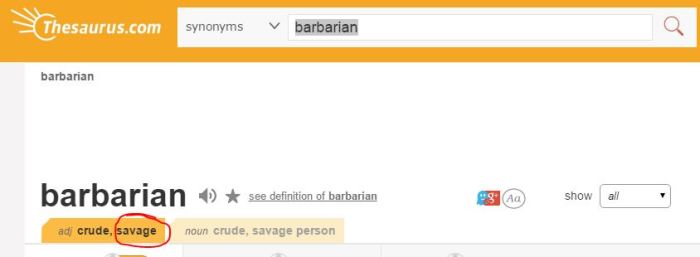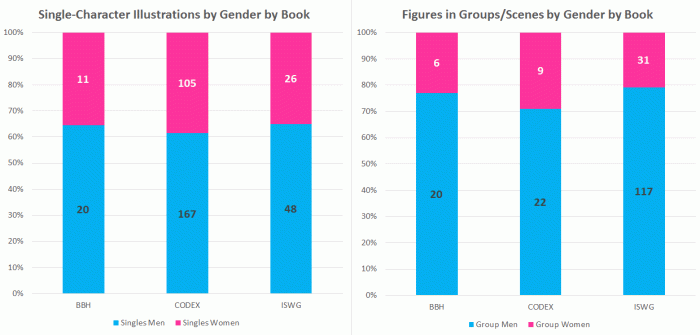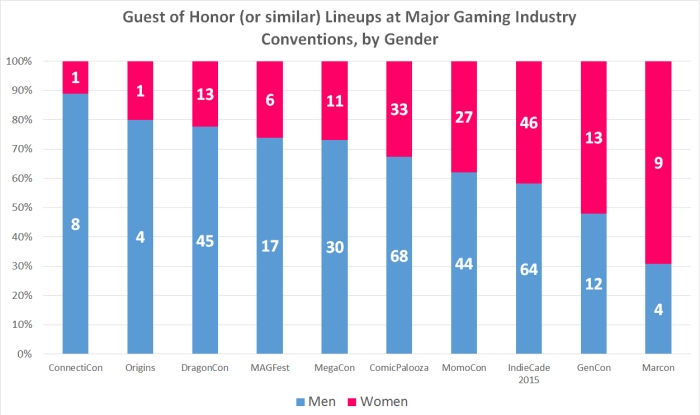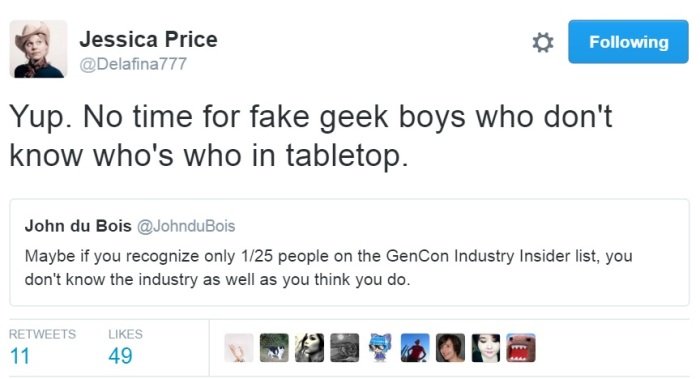So before I start, two things:
- I’ll cop to the fact that this post is inspired by the series I just completed on Pathfinder – but it’s not about Pathfinder, if you catch my meaning. The problem that I’m writing about is a problem for the entire industry, not just for one or two companies.
- While I use particular examples, this isn’t me saying we need to run certain specific people out of the industry, although I’m pretty certain some people will hear just that. I can use someone’s work as an example of what not to do and still not say they should be run out of the industry with torches and pitchforks.
- I am NOT saying get rid of all sexy art in games ever, okay? FFS.
Now that that’s been said, let’s move on to the matter at hand:
When addressing the issue of “how does bad art get past a strong art director”, the thing that comes up again and again is the short timelines to produce a finished product, and not having the luxury of sending a piece back to an artist time, and time, and time again until they get it right. The number of times I’ve heard publishers say things like “sometimes you ask for a strong armored black woman in plate armor and you get porn”, and just shrug it off like there’s nothing to be done about it because that’s just the way things are… It’s kind of astonishing.
Take, for example, this comment by Erik Mona on a long-ago post about Pathfinder:
…we generally give our artists a loose rein to draw what pleases them, and the fact of the matter is that lots of artists, especially the younger male ones who like to draw stuff for comics and gaming companies, are fucking perverts. It must have something to do with all of those life drawing classes they take, or their focus on the human form, or whatever. As a class of people, artists are generally pretty filthy. The number of times over my 10-year career in this industry that I’ve had to send back an image with a note like “um, thanks, but can I get this without hard nipples showing through the leather armor, please?” would shock just about everyone… (full comment can be viewed here)
And trust me, this mirrors pretty precisely what other highly-placed publishers both at large “mainstream” companies and mid-to-large indie outfits have told me[1]. This is a problem that isn’t just widespread – it’s endemic. This results in the sort of cheesecake where the artist was obviously not following the spec, like these images:

(You’ll note that two of the three example images I’ve picked are by Wayne Reynolds. I’ve even joked in the past about calling this Wayne Reynolds syndrome because he’s particularly bad for depicting women as sexual that were obviously meant to be depicted as powerful.) Check out these examples. In the first, we have a pirate that is meant to be sword-fighting some kind of were-shark, but instead she is contorting into the most spine-breaking boobs-and-butt pose imaginable so that we can see her incredibly unrealistic cleavage AND her panties. In the second, we have a female orc who is meant to be seen as a powerful warrior, shown in medium armor and bristling with weapons, with boobs that are perfect spheres, and are about 30 seconds from popping out of her chainmail top. And in the third, we have a character that is clearly meant to be shown as a capable mage, with a collection of scrolls and a magic wand, but instead she is being shown as baring midriff and sideboob in one of the most gravity-defying fantasy outfits I have yet seen.
AND IT’S A REAL PROBLEM.
It’s a problem for the intended audience of the product, because of how the product is perceived – in this case as being sexist. A few isolated examples here and there are one thing, but in the aggregate – given the large scale of this problem – it signals that certain game products are not safe for or welcoming to consumption by women. Some women will buy the product anyway, but a significant number will choose to invest their money in products they feel are more respectful in their depictions of women.
It’s also a problem for the publishers, because the potential loss in sales and long-term damage to the brand’s image of inclusivity isn’t the only factor being weighed. Whenever a publisher gets a sexualized image that is counter to what they asked for, it puts them in a situation where all of the available options suck. Do they throw their timeline out the window by sending the art back – something they might have to do multiple times, depending on how truculent the artist is being? (And trust me, some artists will flat out refuse not to sexualize their images of women.) Or do they roll their eyes and stick to the time line? Both choices are bad! PLUS, the artist is putting them in a situation where they have to spend extra time and energy to evaluating “how much of a problem is this”.
Faced with such a situation, most publishers tend to opt for rolling their eyes and moving on. (They might send it back once, if they have “lots” of time, but then go with whatever they get.) And as much as I rail against the glacial pace of change in tabletop game art, I can’t say that I entirely fault the publishers on that front. Publishing is a tough business! Gamers expect huge value at bargain basement prices! The margins are incredibly narrow, and all it takes is a small mistake for you to end up eating your shirt on a game. (Hell, even if you do everything “perfectly” as a publisher, it’s possible that circumstances entirely beyond your control can still entirely fuck your profit margins.) Breaking a committed timeline can be hugely expensive! So mostly, the people who can afford to be principled and “get it right” are the indies[2] – most of whom have day jobs and aren’t relying on publishing as a primary income.
That said, much as I understand the short-term decision to accept the individual piece of art in the name of getting a product out the door, the fact that the industry as a whole has put up with this incredibly widespread phenomenon as being a thing for so very long is baffling! Publishers will say things like “well what can you do” and “we have no choice” – as if there’s nothing that can be done about a problem that MOST publishers say they want to change, and which has persisted for decades. And then even after an artist gives them art that does not meet the spec that was requested, publishers will continue hiring the same artists over and over again! And that is BONKERS, because that kind of blatant disregard wouldn’t fly for creative work in any other industry. It’s unprofessional, and counter to the interest of the publishers who hire them.
For example, if I hired someone to design a logo for my furniture business and I got back a cleavagey woman humping a couch, I wouldn’t pay for that – it would be a violation of what I asked for. And I definitely wouldn’t say “I should give them more business” once that transaction was complete!
The helplessness with which publishers discuss the phenomenon of rogue artists is doubly frustrating given that ARTISTS ARE NOT UNICORNS; they aren’t some rare, incredibly precious commodity that must be guarded and protected at all costs. In the recent artists all-call that Ryan and I did for Katanas & Trenchcoats, we had eighty-five portfolio submissions. We’re STILL working on narrowing down who we want to work with, because the level of skill among the submissions is incredible! (Seriously, this is a good problem to have.) And yet, because we made such a focus on emphasizing that we wanted diverse applicants, a good many of them are people whose portfolios are deep and impressive, but their illustration experience lies outside the games industry.
Now it’s important to be clear. Sometimes there is miscommunication between publishers and artists that leads to delays that isn’t the artist’s fault, and publishers should ABSOLUTELY not throw their artists under the bus when that happens. Trust me, as someone who has done freelance game illustration, I feel that very keenly. Sometimes publishers ask for a draft, then flat out change their mind. Sometimes what is needed isn’t clear and it takes some back and forth to discover what that is. And that’s fine! I’m talking only about bad-faith approaches to art specs, because the people I’m talking about are repeat offenders. They do this shit over, and over, and over, and over again – and it shows quite clearly in their body of work.
Admittedly, finding new artists does take work. As you might imagine, going through 85 portfolios, narrowing down which artists would be a fit for your project, and deciding from there is something that takes a lot of time! And a lot of publishers have a stable of artists that they like to work with – artists that they know and have worked with in the past. Given the volumes of art required for a typical game book, which can have hundreds of full-color illustrations, going back to the same artists you’ve worked with in the past is just one less decision that needs to be made.
But in the long run, getting rid of artists who can’t follow the instructions you give them for what you are looking for in an illustration will pay off. You’ll get art that matches your creative vision, that doesn’t tarnish your brand by association, and that doesn’t force you to choose between satisfying your morals and honoring business commitments. (Because the thing is, every publisher I’ve talked to will say this is a problem, and that they would like to see it change.) As long as everyone’s response is to throw their hands in the air and claim that NOTHING CAN BE DONE, no substantial change will ever be made!
As publishers, we can make things SO much better by simply insisting on the absolute minimum standards of professionalism when dealing with artists; if your artists can’t be bothered to give you, THE CLIENT, what you are asking for, tell them that you need them to pay attention to the specs as written. And if they still don’t follow it? Fire them and hire a different artist.
[1] This tends to be less of a problem for micro-publishers like myself, because micro-publishers tend to either 1) do the art themselves 2) use stock art 3) work out a trade arrangement with a friend who won’t fuck them over. There are exceptions, sure, but any time you have a shoe-string budget, you end up doing more yourself, which means you keep more CONTROL to yourself.
[2] There are exceptions, of course – Evil Hat, Pelgrane Press, and Magpie Games being the most notable.































